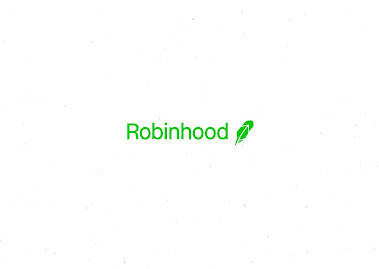- FintechGeneralIPO
- July 2, 2021
- 13 minutes read
IPO: Key Takes From Robinhood’s S-1 Filing
Yesterday on Thursday was the day one of the most anticipated IPOs of this year came to fruition. It was…
Yesterday on Thursday was the day one of the most anticipated IPOs of this year came to fruition. It was the day Robinhood, the popular stock and crypto trading app, unveiled its filing for an IPO. The trading app has had many eyes on it since it began making waves circa 2017 and more so in the past year, especially for its role in the “meme stock” saga.
- Robinhood claims to have “democratized investing” with its seemingly gamified trading app targeted at retail investors. At that, it’s provided an easy way for small, retail investors to get in on the stock markets, but has also made it easy for such retail investors to trade risky assets to their potential detriment. Robinhood may both be a blessing and curse, depending on who you ask.
- In this piece, we’re combing through Robinhood’s SEC paperwork to pick out some bits that may be interesting to you, and trust us, Robinhood’s paperwork has many interesting bits. First of all, the company is earmarking up to 35% of its IPO shares for retail investors using its app, so you could buy Robinhood stock at the set IPO price on the Robinhood app.
Revenue Stats
- Robinhood had $959mn in revenue for 2020, more than triple from $277mn in 2019. It made a small net profit of $7.4mn last year, compared to a $107mn net loss in 2019.
- In the first three months of 2021, Robinhood’s revenue was $420mn, a greater-than-fourfold jump from $96mn in the previous year.
- Most of Robinhood’s revenue comes from “payment for order flow”, that is money paid by market makers (hedge funds, quant traders e.t.c) for Robinhood to direct their clients’ orders their way for execution. This sort of rebate model to brokers like Robinhood is controversial and mind you is banned in countries like the UK, Australia, and Canada.
- In 2020, payment for order flow made up 75% of Robinhood’s revenue. From that 75%, just three firms made up 62% of it – Citadel, Susquehanna International Group, and Wolverine Holdings. Citadel is the multi-billion hedge fund that was caught up in Robinhood’s GameStop saga this year.
- In the first three months of this year, payment for order flow made up 59% of Robinhood’s revenue.
- Robinhood’s other revenue sources include charging for premium features, lending customers’ shares to short-sellers for a fee, and interest earned on margined assets.
Assets
- On its platform, Robinhood customers own $65bn of stocks, $11.6bn of cryptocurrency, and $2bn of options. That sums up to about $81bn in assets for a reported 18 million client accounts, averaging $4,500 per client.
Interestingly, the “meme” cryptocurrency Dogecoin makes up a great deal of cryptocurrency traded on Robinhood’s platform. It was in fact disclosed as a risk factor in the SEC paperwork, where it’s stated that Dogecoin made up 34% of Robinhood’s crypto transaction-based revenue in Q1 2021 and poses a risk to its business if interest in the meme coin falls.
It must be fun times when a digital currency created as a joke ends up in serious SEC paperwork. From our findings, it’s in fact the first time that Dogecoin has popped up in an SEC filing.
Exec Pay
 |
| Daniel Gallagher |
- Robinhood’s highest-paid executive disclosed in its paperwork is Daniel Gallagher, the company’s Chief Legal Officer who earned $30mn (mostly from stocks) in 2020. Gallagher is a former Commissioner of the US Securities and Exchanges Commission (SEC), you know the same commission in charge of regulating Robinhood’s trading activities.
- Gallagher must be worth his weight in gold if Robinhood is paying him huge sums to leverage his knowledge as a former SEC commissioner to help deal with the agency where he was helmed a top position. For reference, the SEC fined Robinhood $65mn last year and is reportedly still in the company’s crosshairs with a probe into its crypto business.
Litigation
- Robinhood is involved in serious litigation, such that its SEC paperwork listed a total of 49 plaintiff lawsuits and regulatory inquiries into its activities. The targets of such litigation include its options trading business, account takeovers, trading outages, and its restrictions on trading ‘meme’ stocks like GameStop and AMC at one point this year.
- Robinhood has received inquiries from the US Justice Department, the SEC, FINRA, the New York Attorney General’s Office, and other state attorneys’ general offices. It settled a case with FINRA with a $70mn fine just a day before filing for its IPO. Who knows, it could be paying more significant fines in the future as a result of litigation.
- Notably, Robinhood’s S-1 made note of a certain warrant executed by the United States Attorney’s Office for the Northern District of California where the mobile phone of its CEO Vlad Tenev was seized, hmm.
- There have also been inquiries into the trading activities of Robinhood’s employees, given that they may have privileged access to information on stock market activities.
Robinhood seems like a startup that moved too fast and broke things in regulated markets and is facing significant litigation and fines for that, despite some good money made anyways.
Now, the maturing Robinhood is investing much to build out needed compliance and customer service infrastructure at a high cost, such that its operating expenses rose 246% to $945 million in 2020 and $463mn in Q1 2021.
As of March end, Robinhood had 18 million monthly active users and 8 million daily, down from a peak of around 20 million and 10 million respectively. In Q1′ 21, customers pulled out a total of $4.1bn from its platform, representing 5% of overall assets under custody.
- The final terms of Robinhood’s IPO have not yet been set. The chatter is that the company is targeting a valuation of at least $40bn with it.
- Robinhood intends to list on the Nasdaq exchange with the trading symbol “HOOD”.









